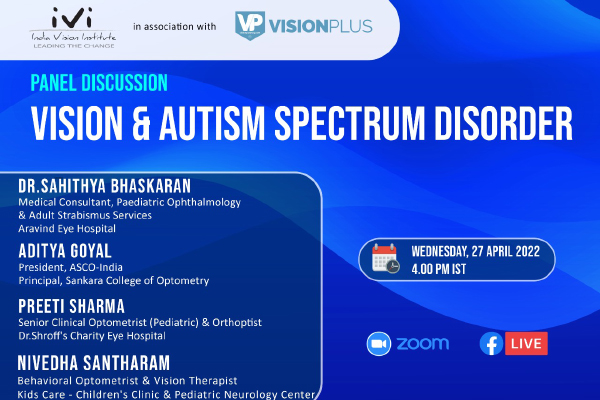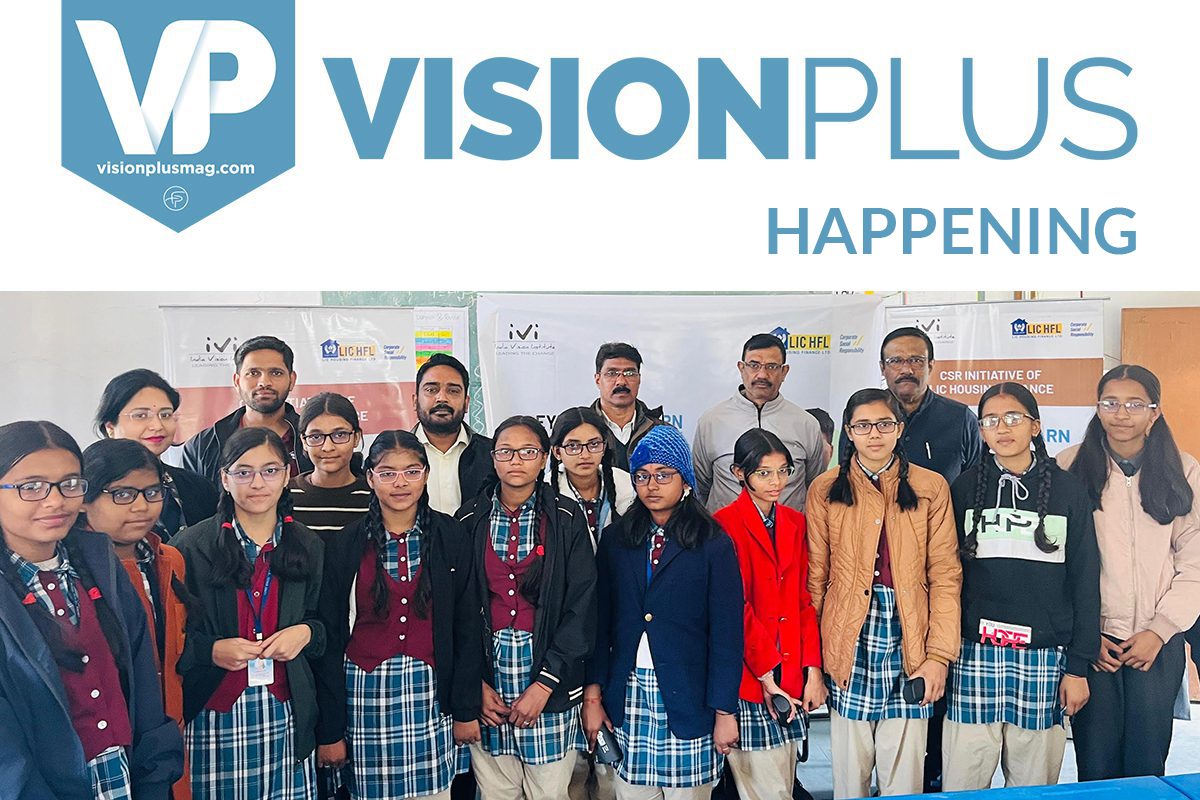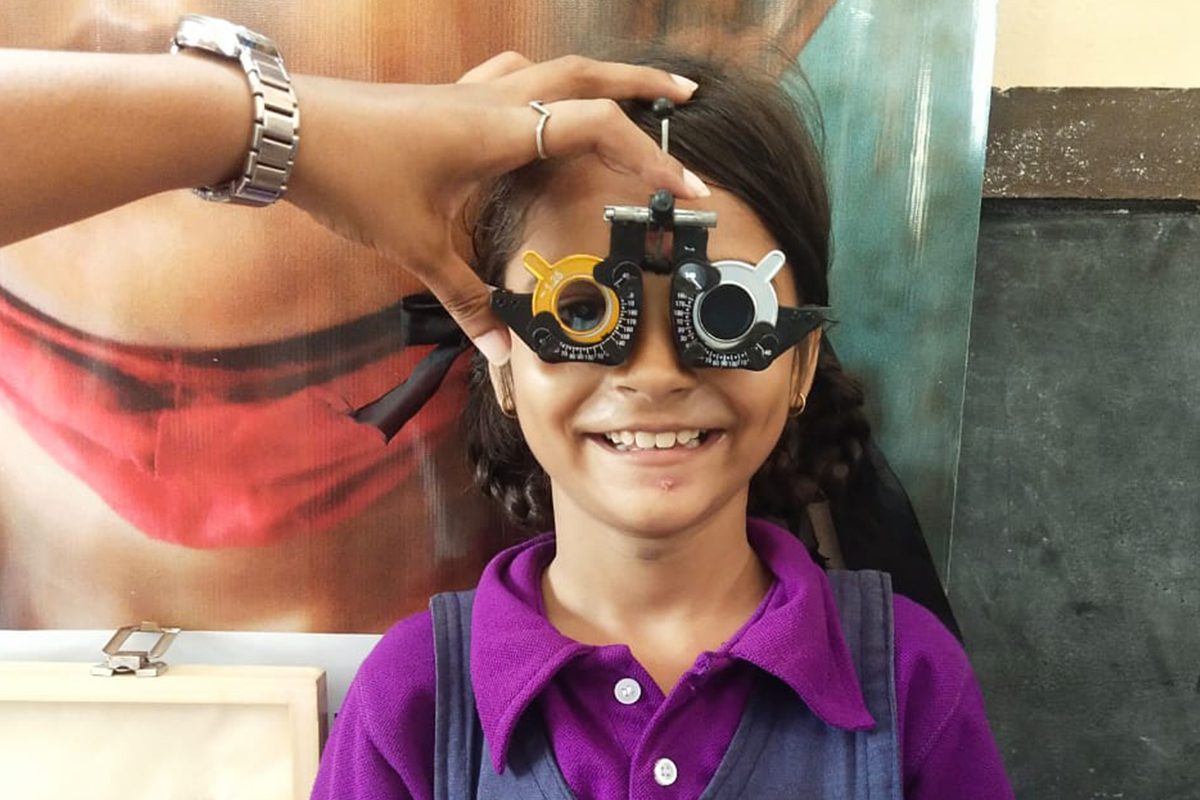Autism Spectrum Disorder (ASD) is a neurodevelopmental condition associated with autism. ASD has lifelong implications for children with autism, such as compromised social functioning, lack of eye contact, staring at light or spinning objects, fleeting peripheral glances, and problems in coordinating central and peripheral vision. It is believed that impaired sensory processing due to autism may be the cause of many of the symptoms and behavioral signs of ASD. Early intervention and management through measures such as visual cognitive therapy help maximise the quality of life and outcomes.
An India Vision Institute (IVI)-VisionPlus panel discussion was held on April 28 to explore this life-altering condition. Moderated by Vinod Daniel, the panel comprised Dr Sahitya Bhaskaran, Medical Consultant, Paediatric Opthalmology & Adult Strabismus Services, Aravind Eye Hospital, Aditya Goyal, President, ASCO-India, Principal, Sankara College of Optometry, Preeti Sharma, Senior Clinical Optometrist (Paediatric) & Orthoptist, Dr Shroff’s Charity Eye Hospital, and Nivedha Santharam, Behavioral Optometrist & Vision Therapist, Kids Care – Children’s Clinic & Paediatric Neurology Center.
Children with ASD see and process sensory stimuli and the surrounding environment differently. This review will summarize our current knowledge of key aspects of visual functions and the optometric profile of ASD. While many have normal visual acuity, children with autism often have atypical eye movements and are susceptible to subtle visuomotor deficits. There is also an increased prevalence of strabismus, an increased likelihood of astigmatism and possibly other refractive errors. Children with ASD will find it difficult to pay attention and perform complex tasks involving vision and their retinal structure and function may also be compromised.
Autistic children consistently show features of cerebral visual impairment. “Even if they have good visual acuity and good contrast, many still have a lot of processing difficulty. They face problems in discerning and discriminating between visual stimuli. They also face challenges in identifying emotions,” said Dr Bhaskaran. Many children with ASD also face difficulties in functional vision or perceptual vision. These often manifest in the form of learning disabilities and other secondary behavioral disabilities.
Mr Daniel asked panelists to shed light on the prevalence of vision impairment among autistic children and the telltale signs that can be used to identify ASD. “How serious is the risk of vision impairment among autistic children? Is it the same as with the general population? What are the indicators to look for when it comes to vision impairment among autistic children?”
According to Aditya Goyal, it is usually already known that a child has autism by the time they meet an optometrist or ophthalmologist. “Initially, it is psychologists and pediatricians who diagnose autism or ASD. This means that ophthalmologists and optometrists only get involved at a later stage, by when it is already clear that a child has autism,” he observed. Data shows that children with autism are more likely to have vision impairment, with a heightened prevalence of refractive error and binocular vision compared to the non-autistic population. Even though many autistic children may outwardly appear to have normal vision, most will have some form of cerebral or functional vision impairment. One sign of a child having ASD is his or her inability to integrate central and peripheral vision. Autistic children find it hard to process and integrate their central and peripheral vision. As Preeti Sharma pointed out, early detection of ASD is critical. “Early detection is very important. Early detection is vital for us to be able to provide the best solutions in therapy. Only when a child’s ASD is detected can we improve their perceptual skills and quality of life.”
Mr Daniel highlighted the value of therapy as a means of helping ASD patients lead better lives but drew the panelists’ attention to the fact that many autistic children do not seem to benefit from certain kinds of therapy. “Many children do not show improvement in vision even with occupational therapy. What should be done in such cases?” Nivedha Santharam acknowledged that there is no one-size-fits-all solution. “Every therapy is not for every child. An inter-disciplinary exchange of inputs is important. Specialists in different forms of therapy need to interact with each other to devise tailor-made strategies for each child, to suit his or her unique needs,” she underscored.
While vision therapy exercises can help improve key skills such as hand-eye coordination and visual memory in children with ASD, the panelists argued that therapy should be much more than just vision therapy, it should be ‘visual cognitive therapy.’ Treatment and therapy will be effective only when it takes into account what is happening to a child with ASD in a holistic sense, and inputs from professionals in multiple fields are vital to this end. To treat any child with special needs, practitioners need to have input from other professionals such as pediatric neurologists, child psychologists, occupational therapists, special educators, and neurodevelopmental therapists, among others. A multidisciplinary approach will also ease the workload of therapists and make it easier to manage children with autism.
Sustainable quality of life improvements from therapy can only happen with the active cooperation of parents. A child interacts with the parents more than it interacts with therapists. Parents can give a therapist otherwise unknown details of a child’s condition. They can be counselled so that they bring their children to therapy on a regular basis and ensure that what children learn in therapy is implemented on a daily basis at home.
Perhaps most importantly, it is time we look at people with autism as normal human beings. There is nothing ‘abnormal’ about them, and the many high-achieving autistic individuals in various walks of life are proof enough. An empathetic approach to treatment and therapy that views a child with ASD as unique and capable should be adopted. Any form of treatment or therapy needs to involve the child as an active participant. The therapist has to be empathetic and flexible because no two autism cases can be exactly the same, each child has his or her specific needs and will react to different environments and treatments in many different ways. Therapy should be individualized and should have the capacity to change based on the child’s needs as they change from time to time. Every child is unique, and so the therapy, too, must adapt accordingly.












